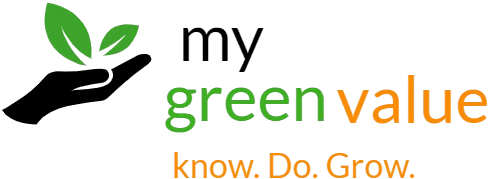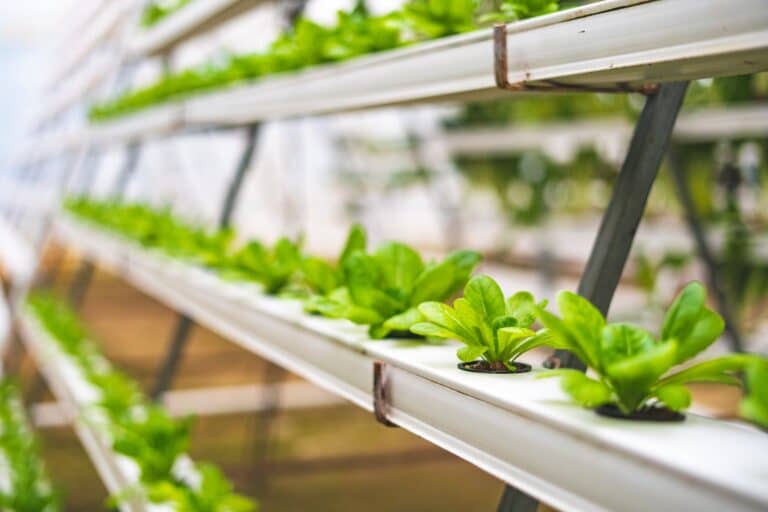Hydroponics makes it possible to grow plants without the need for soil. Plants majorly need water and nutrients for growth and only need soil for support and to acquire some mineral elements.
However, in hydroponic urban farming, plants can be provided with these nutrients in an aqueous solution depending on their growth stage and individual plant profiles.
Here, plants are grown in a soil less nutrient rich media. They are supported by media like gravel or perlite while their roots dangle in the nutrient rich aqueous solution.
The nutrients can sourced from artificial inorganic fertilizers like NPK, or organic fertilizers like fish and duck excrement which are mixed in the water to provide nourishment to plants.
Examples of plants grown include;
- Leafy vegetables like lettuce, spinach, Chinese cabbage, micro greens
- Cucumbers
- Tomatoes
- Strawberries
- Herbs like sage and stevia
Contents
Advantages of hydroponics
1. Easy to control plant growth parameters
Farmers can make sure that plants get the exact amount of nutrients they need for maximum growth. The hydroponic systems are also grown indoor so other factors like temperature, lighting can be controlled as well.
2. Can be done anywhere.
Hydroponic farming system is used indoor farming which enables agriculture to be carried out anywhere. Besides people can also have hydroponic kits in their homes to grow their own vegetables and herbs.
3. Decreased and efficient water usage;
The system uses 20 times less water as compared to traditional farming methods since the water is recycled and pumped back to plants in the system.
4. Efficient nutrient uptake by plants
Since the nutrients are provided to them in a dissolved state, the plants can easily absorb them thus ensuring faster growth compared to a soil media where they can be leached.
5. Little space utilization
The system uses less space as a large number of plants can be grown on vertically arranged stands in vertical farming or on horizontal tower farms.
6. Possibility of integration
Farming systems like aquaponics combine fish farming and hydroponics. Waste water from fish is pumped to the hydroponic setup where the plants use it to get nourishment and clean it. It is then pumped back to the fish tank.
7. Profuse production
Vertical hydroponic farming results in a large number of crops being grown in a small space over a short period of time. The production rate is very high as well as the yields.
8. Ready market for produce
The plants grown have large market and high demand in urban areas where people buy groceries for home consumption and also in the numerous restaurants and hotels.
9. Relatively cheap to set up
Hydroponic equipment are relatively cheap, readily available and very easy to set up. You can start farming the following day after getting everything set up while traditional land preparation farming takes time and costs like tilling or liming to buffer the soil.
10. Minimizes labor costs
Once set up, the farmer just has to maintain nutrient levels and monitor plant health minimizing costs as compared to traditional farming; sowing, mulching, weeding, and other laborious activities.
11. Easy to control pests and diseases
Most hydroponic farming is done indoors in a controlled environment and it’s thus easy to control pests and diseases. Soil borne diseases and parasites are also cut off since the plants are grown in a soilless medium.
Diseased plants can also be easily identified and removed since there is good spacing between individual plants. The water can also be sterilized and treated to avoid transmitting water borne diseases.
12. Fewer chemical usage
Inorganic fertilizers like NPK may be used to provide the plants with nourishment but incidences of herbicides and pesticide usage are out of the roof
13. Year round production.
Plants can be grown all year round irrespective of season or climate location using hydroponics.
14. Easy harvesting and packaging of crops.
Disadvantages of hydroponics
The systems requires energy to avail water to plants using a pump. Other energy costs may be as a result of lighting for plants growth especially if the farmer doesn’t use LED lights in their indoor hydroponic farm.
The plants need to be monitored continuously to ensure proper growth by removing diseased plants and maintaining nutrient levels. Expertise can also be required for where the individual farmer may need technical assistance.
In case of contamination and water borne disease propagation (viruses and bacteria diseases majorly), a very large number of plants can be affected resulting in major loss especially if the diseases aren’t detected very early.
Bottom line.
Hydroponic farming is a very ideal and recommended urban farming method of growing plants effectively, and efficiently in large numbers without much hassle while yielding a lot of profits. It is also very popular amongst many urban farmers and indoor vertical farming companies because of its outstanding benefits. Try it today.

